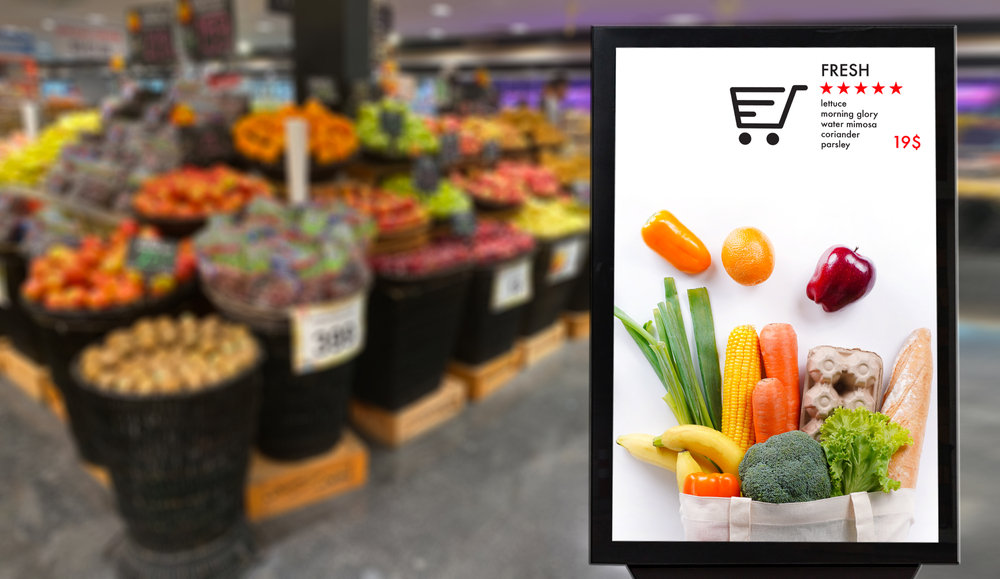Few things to consider before investing in Digital Signage
In the fields of marketing and communication, one trend that is rapidly gaining traction is the utilization of digital displays to disseminate messages, information, and advertisements. Technology has been around for a while, but thanks to recent advancements in digital displays, software, and networking, it is now more accessible and inexpensive than it has ever been before. The use of digital signage to advertise a company's goods and services is becoming increasingly popular among businesses of all sizes and scopes, from one-person operations to international corporations. Hence, if you are interested in digital signage, here are some of the points you need to consider before investing in one: -
What is digital signage?
Information, advertisements, or any other content can be transmitted over digital signage, or an electronic display. Multimedia materials such as still images, moving images, animations, text, and sound are displayed on digital displays such as LCD screens, LED boards, or projections.
Benefits of digital signage
- Digital signage makes it simple to tailor your material to your specific audience and business objectives in real-time.
- Digital signage may save money in the long run if compared to traditional advertising and communication methods due to the elimination of some of the middlemen like printing, dissemination, and manual updates.
- Digital signage can also be made interactive so that viewers can click on links, scroll through menus, and watch supplemental materials.
- Integrating data analytics tools into digital signage allows you to monitor how many people are viewing your content, learn what kinds of content are most popular, and make informed decisions about how to improve your digital signage.
Uses of digital signage
- Hospitality: - Digital signage can be used to improve the guest experience by providing information such as menus, event schedules, and instructions.
- Business sector: - For business purposes, digital signage has found a home in waiting areas, meeting rooms, and workplaces.
- Travelling sector: - Airports, train stations, and bus terminals can all benefit from digital signage by using it to announce arrival and departure times, provide instructions, and even issue urgent safety warnings to passengers.
- Educational sector: - The educational system can benefit from digital signage by using it to publicize activities and share information with students and faculty.
- Health care sectors: - Information, directions, and wayfinding are just some of the healthcare-related uses for digital signs in places like hospitals, clinics, and pharmacies.
What are the key components of digital signage?
- Digital signage gear consists of things like screens, media players, stands, and connections. Equipment for constant use should be sturdy, dependable, and suitable for the intended software and content.
- Application software is what controls the display's media, schedule, and dissemination. It needs to be simple to use, adaptable, expandable, and permit individualization of both content and layout.
- Images, videos, animations, text, and sound can all be used as material in digital signage. To achieve its purpose, the content must be interesting to the target group and provide valuable information.
- Digital signage cannot function without access to the internet for information distribution and management. The network must be easy to control and monitor from afar in addition to being quick, safe, and secure.
What are the best practices for digital signage?
Before you begin making content for your digital signage, you should determine your primary objectives and your intended population. With this knowledge, you can target the right audience with the right message and achieve the right goals with the right style. Hence, here are some of the best practices of digital signage you need to know about: -
- Use engaging visuals
Digital signage relies heavily on visuals, so ensure your information stands out. Make sure the pictures, videos, and cartoons you use are of a high quality and interesting enough to keep the reader interested in your message. Don't get too fancy with your design; instead, focus on keeping things neat and orderly while keeping the volume down.
- Try not to confuse users
Users of digital signage typically have limited time and attention, so the information should be concise and easy to understand. Write in clear, straightforward English that can be grasped in a single reading. Prevent readers from becoming overwhelmed by avoiding jargon, complicated words, and excessive information.
Conclusion
Digital signage has become an essential tool for businesses and organizations to communicate their messages and engage their audiences in a dynamic and effective way. By following these best practices and leveraging the latest technology and content strategies, you can create a successful digital signage display that drives results and enhances your brand image.









No comments